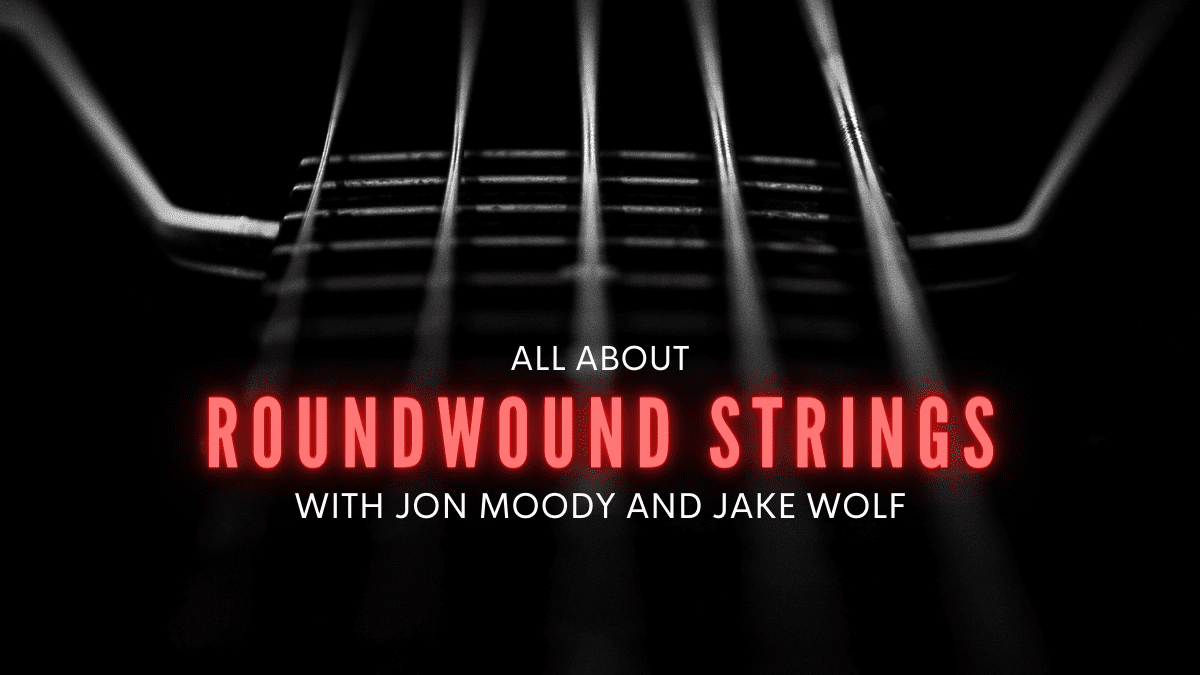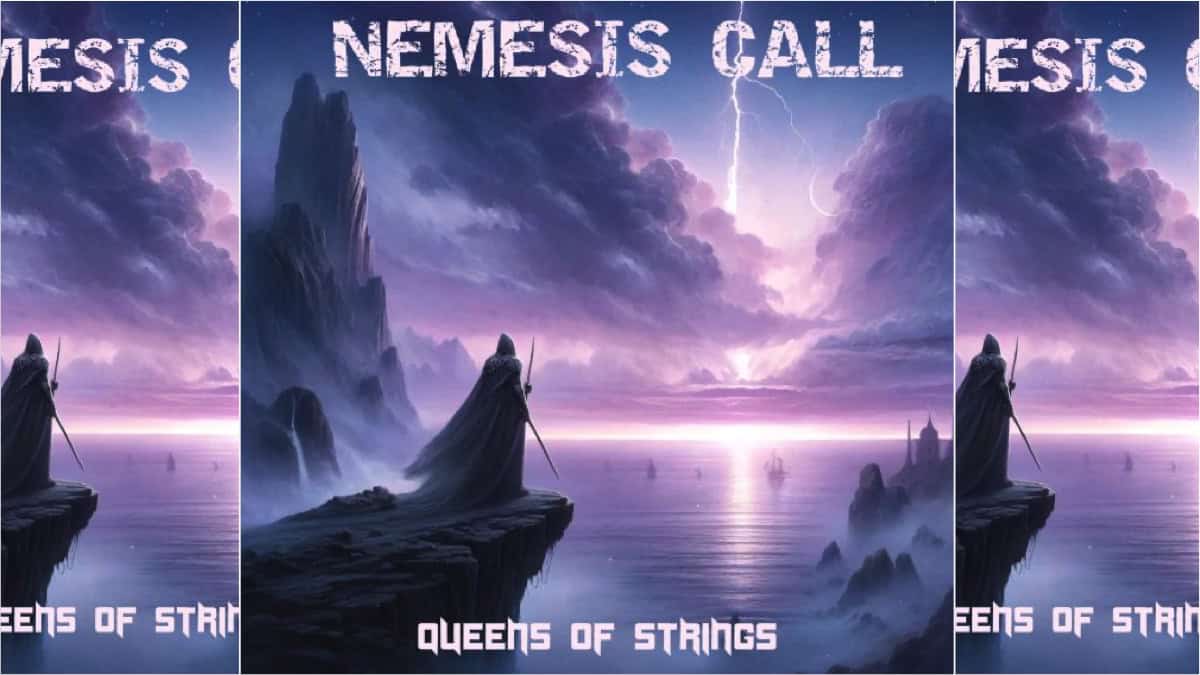Latest
All About Roundwound Strings

All About Roundwound Strings, with GHS’s Jon Moody…
I’ve been wanting to talk about the importance of strings on our overall playing experience and tone. In particular, I’ve been wanting to pick the brain of Jon Moody, GHS product specialist and bassist extraordinaire, to get his take on some of the finer points of bass string design and manufacturing, as someone with intimate working knowledge on the subject. Not only is Jon GHS’s bass string guru, but he is also a heck of a seasoned working player and a fellow contributor to Bass Musician Magazine. I knew a thing or two about bass strings going in, but it’s been really interesting to get his perspective on all things roundwound. And I have to say, with as much attention as we put on our instruments and amps, and even pickups, many players are quick to underestimate the importance of their strings. Even those of us who know that we prefer “nickel” or “steel” strings aren’t always thinking about core material and size, winding/construction type, and other subtle but important aspects that can make or break our comfort and enjoyment on the instrument. Jon was kind enough to humor my inquires, and what follows are his reflections on these topics.
Nickel and Steel
The most obvious thing that comes to mind when choosing roundwounds is nickel vs steel. It’s the main thing we think of in differentiating between rounds because to be fair, it’s how roundwound strings are mainly classified and marketed to us. And for good reason – the outer wrap of the string has a big impact on how a string feels and sounds. But it’s not always quite that simple. Conventional wisdom says that nickel strings feel smoother to the touch, and have a warmer tone, whereas steel has a bit of a rougher, tackier feel and more upper harmonic content, giving it more bite in the upper register and upper mids. However, as Jon puts it: “a lot of the smooth feel comes down to the diameter of the final cover wire. A smaller final cover will feel smoother than a larger one. With that, you can easily make a steel string that is smoother to the touch than nickel, simply by playing with the diameters of the final cover”. Not to mention, that the brightness of a string is also largely affected not only by the outer wrap but the inner windings as well. “A nickel E string (that traditionally has three covers) that has stainless for two and nickel for the final might wind up sounding brighter than a stainless-steel E string with nickel covers and a stainless final.”
And to make things even more interesting, all “nickel” strings, for example, are not created equal. The difference between nickel-plated steel and pure nickel is significant. As Jon says, “What we typically refer to as “nickel strings” are actually a nickel-plated steel (usually 8% nickel plating, but some use a 5% or 2% nickel plating). Pure nickel gives you a deep fundamental sound and was one of the original string materials used. For those players wanting a more “authentic” sound but don’t want to play flatwounds, pure nickel strings are a good option. The other really popular one is nickel-iron, or Alloy 52. It’s used because of its magnetic properties, which provide more output from the strings to the pickups. A lot of players assume this means that you get a bigger sound from your instrument – which is true! – but I find that with the higher output of the strings, it allows you to play with more dynamics, as the quieter you play, you still retain focus and sound.”
String Core Type and Size
In addition to winding and wrap material, core type has a big effect on the feel of a string, in terms of its flexibility and the way it behaves. You’ve probably seen “hex core” and “round core” on string packaging. Core type is significant enough that GHS even offers their famous Boomers bass strings in both core types, which speaks to the degree to which core type can affect the string. Jon says “a hex core string will “feel” stiffer than a round core string with the same diameter… For tone, I find the round core strings have a slightly softer top end that isn’t pronounced.”
Beyond the type of core (round vs hex), the diameter of the core material also plays an important role in how we perceive the feel of a string. “The larger the diameter of the core, the stiffer the string will be. This is how you can get a hex core string to “feel” like a round core string; use a smaller core diameter. Conversely, this is how you can make a set of strings specifically designed for down tuning; use larger core diameters. In terms of tone, a larger core tends to favor a slightly bigger sound with more fundamental, while the smaller core gives more flexibility and harmonic content.”
Tapered Core Strings
You may have noticed string sets with tapered B strings which claim to result in better intonation, as well as exposed core strings that are often marketed as being more “piano-like” in their tone. These strings have fewer windings at their contact point with the bridge, or in the case of exposed core, are just a thin core material at the bridge. Jon’s take is that “Tapered/exposed core strings allow you to better intonate lower strings. How many times have we bottomed out a B string saddle while trying to adjust the intonation of a new set of strings? The taper/exposed core strings address this issue, while also giving you a slightly brighter sound, more focused overtones, and a different feel. It also facilitates stringing up larger gauge strings in a top-load bridge. There are “full sets” (anything smaller than the D string is usually not tapered as it’s too little)” tapered/exposed core strings out there, but most of the sets you see offered utilize the taper on the B string.”
String Gauge and Tension
Moving on to string gauge. And man, there are a lot of options here. Light, medium-light, medium, medium-heavy, heavy, light top medium bottom, balanced tension, etc… It can be truly overwhelming. Ultimately gauge preference comes down to feel. Some people prefer lighter gauge strings for their flexibility and enhanced harmonic content. Some players prefer medium or heavy strings either because of the taut feel, or the fuller tone of medium or heavy strings. This is all purely subjective, and usually, it’s pretty obvious to a given player what type of gauge works for you. String gauge and string tension go hand in hand, and if you play with a lighter or heavier touch, you’ll probably have an inherent preference for string gauge.
Speaking of tension, the seemingly recent trend around “balanced tension sets” with funky-looking nonlinear string gauges, which are advertised as offering more consistent string tension from string to string are becoming increasingly popular with several big brands. I asked Jon about balanced tension string sets: “To a point, balanced gauges have been around for a very long time. If you look at classical strings, they’ve been focused on this for hundreds of years. Strings were originally designed by feel; someone would play a set, say “this string feels a bit stiff,” make adjustments, and move forward. The actual “gauge” of a string wasn’t given that much credence. As long as the set felt even and balanced, it was good. The biggest benefit is consistent tension. If you have a set of strings that is “top-heavy” or vice versa, that can put uneven stress upon the neck and possibly twist it over time. A balanced set of strings provides a consistent tension to the neck, across the entire fretboard. That also translates to the player having an “easier” time (how easy is really up to the individual) as all the strings are responding uniformly under your fingers. However, I think “balanced” string gauges have been weaponized somewhat in the marketing ether. For the record, resources like Tension Guides from string manufacturers are a good thing, allowing players to make informed choices, especially when you’re looking to down tune, or use a non-traditional tuning on your bass. But thinking that a set of strings is “balanced” strictly by a tension guide is only one part of the equation. Something may be balanced on paper, but sound completely awful in context.”
So, what does all this mean? Well, ultimately, and thankfully, the simplest solution applies: If it feels good, and it sounds good to you, it is good! I still think it’s best to use your ears and your hands to decide which strings are best suited for you, but it sure helps to understand some of the design and manufacturing attributes that explain why there are so many options out there. And since it can be a pricey thing to experiment with, it can help to know roughly what you like and don’t like, to minimize costly trial and error. But at the end of the day, the only way to really know what’s gonna work for you on a given bass is to try different strings and see for yourself.
Big thanks to Jon Moody for lending his experience and expertise here. Keep an eye out for our next installment of this conversation, on the elusive and surprisingly varied world of flatwound strings, coming soon to a fingerboard near you. Play on friends!
Gear News
New Gear: Spector Doug Wimbish USA Custom Series Basses

Spector offers Doug Wimbish USA Custom Series basses…
Spector, a leading authority in bass guitar design, unveils two new Doug Wimbish USA Custom Series basses. Synonymous with bass excellence since 1987, Wimbish collaborated with Spector’s USA Custom Shop to create the DW-4 and DW-5 models, echoing the iconic instruments that have been favored heavily throughout his recording and performing career.
These signature basses faithfully replicate Wimbish’s originals, down to the smallest details like neck contours and nut widths. Customized EMG pickups, developed in collaboration with Wimbish, capture the distinctive sound that has shaped his monumental musical impact. These models invite players to explore the feel and response that have defined Wimbish’s signature style over the years.
Available in 4-string and 5-string versions, each model boasts unique features & finish options. The DW-4 comes in Amber Stain Gloss and Black Stain Gloss options, while the DW-5 offers Dark Blue Stain Gloss and Faded Natural Gloss. Every purchase includes a certificate of authenticity signed by Doug Wimbish. Wimbish comments, “Spector took the time to get every little nuance right, and that to me is dedication and being thoughtful enough to know ‘I want to nail it,’ and they did. I’m able to pick these instruments up for the first time and play them like I’ve already had them for years.”
For more information, visit spectorbass.com/doug-wimbish-usa-signature-series/.
Photo: Doug Wimbish, pictured with the new Spector Doug Wimbish USA Custom Series basses
Bass CDs
New Campaign: Alberto Rigoni, Nemesis Call – Queens Of Strings

Italian bass master and composer ALBERTO RIGONI is thrilled to announce his brand new project “Nemesis Call – Queens Of Strings”.
Nemesis Call – Queens Of Strings features a super talented drummer from Japan (TBA) and tons of female guitarists such as SAKI, Giusy Busetto, Alexandra Zerner (TBC) and many many others (TBA). Furthermore, Alberto has also launched a Fundraising Campaign for the project. 20% of the income will be donated to Lega del Filo d’Oro legadelfilodoro.it/it, an Italian association that helps deaf and blind children!
Alberto shares:
“Hello friends and music lovers! I’m Alberto Rigoni, an Italian composer and.. a BASS GUY! Between 2008 and 2024 I released 13 solo albums, spanning from progressive, rock, ambient to funky and experimental music, which also features contributions from musicians such as keyboard wizard Jordan Rudess (Dream Theater) drummer Gavin Harrison (Porcupine Tree) and Marco Minnemann (the Aristocrats), keyboardist Kevin Moore (ex Dream Theater), singer John Jeff Soto (ex Goran Edman (ex Y. Malmsteen), bassists Nathan East, Stu Hamm (Joe Satriani), Nik West (ex Prince) and many others. I’m also bass player for BAD As, Sunset Groove Society, Kim Bingham, The Italians bands and co-producer of Mistheria’s Vivaldi Metal Project.”
Alberto on the new project Nemesis Call:
“Even if my latest album “Unexpected Lullabies”, dedicated to my newborn Vittoria Parini Rigoni, will be released on June 4th, 2024, when Vittoria came to life I felt the need to compose new music (yes, I really can’t stop!!!!!). This time will be quite challenging because I’m willing to release an instrumental ambient/prog/rock/metal album, that will feature a talented and young drummer (TBA) and tons of female guitarists (that’s why I will call the album “Queens of the Strings”) such as Alexandra Zerner, YOKA and many others (TBA/TBC)). It won’t be easy to manage all such great musicians but I will make it!! Are you ready to face a new prog experience? The album will be released in Digipack CD and in high-quality digital format approximately at the beginning of 2025.”
The Fundraising Campaign:
As an independent artist, Alberto is looking for supporters who can help him reach the budget for the production (recordings, mix, mastering, artwork etc.) of this new album and has started this fundraising campaign that will end successfully on October 15th, 2024.
Get further information about Alberto Rigoni’s new project Nemesis Call Fundraising campaign at albertorigoni.net/nemesiscal
Bass Videos
Artist Update With Bassist Derek Frank

Bassist Derek Frank…
Many of you will remember the last time I chatted with Derek Frank was back in 2017. The main thing that impressed me was how busy Derek was and how he juggled playing with many huge acts.
Now, I am happy to hear that Derek launched a new album last March titled “Origin Story” where he digs deep into his roots and pays homage to Pittsburg.
Join me as we get caught up after all these years and hear the details about the new album, how Derek gets his sound, and his plans for the future.
Photo, Stephen Bradley
Featured Videos:
Visit Online:
www.derekfrank.com
www.instagram.com/derekfrankbass
www.youtube.com/derekfrankbass
www.facebook.com/derekfrankbass
Latest
This Week’s Top 10 Basses on Instagram

Check out our top 10 favorite basses on Instagram this week…
Click to follow Bass Musician on Instagram @bassmusicianmag
FEATURED @foderaguitars @bqwbassguitar @lecomptebass @xvector_basses @vuorensaku_guitars @phdbassguitars @meridian_guitars @sterlingbymusicman @ramabass.ok @overwaterbasses
Gear News
New Gear: Alberto Rigoni Signature Bass, the VPR5 by Gaetano Costanzo!

Alberto Rigoni Signature Bass, the VPR5 by Gaetano Costanzo!
Internationally renowned bassist ALBERTO RIGONI (soloist, BAD AS, Vivaldi Metal Project, TwinSpirits, etc.) is proud to announce the release of his signature bass VPR5 made by renowned Italian luthier Gaetano Costanzo!
The bass is entirely handmade in Italy, without the use of CNC or other machinery, and has rather special features. The VPR is a 5-string bass (but also available as a 4-string) with 30 frets, Seymour Duncan pickups, Music Man Alnico style, passive electronics (volume, tone and a switch to select series/parallel/single-coil mode), alder body, and American maple neck and fingerboard. Gotoh tuners that ensure perfect intonation. The bass is totally painted white (nitro finish) but other colors can be requested. The VPR has a weight of about 2.9 kg and suitable for any genre.
For more information contact Gaetanobass77@gmail.com or visit online at www.instagram.com/gaetanocostanzoluthier or www.facebook.com/GaetanoCostanzoLuthier








